It actually doesn’t take much to make your first investment. You can start investing with little money and building towards your financial goals.
Still, when you’re starting out investing can be confusing and intimidating. We’ve been there too.
It can be really difficult to figure what you need and what you need to do to start investing.
On top of that, some investments require large amounts of money that you might not have yet.
But, there are ways to start investing with little money so that you can build your wealth achieve your financial goals.
Table of Contents
- What are the Steps of Investing?
- The Difference between Saving and Investing
- Are You Ready to Start Investing?
- What do You Earn and Spend?
- Evaluate Your Debt
- Why are You Saving and Investing?
- What are You Going to Invest in?
- Ways to Start Investing with Little Money
- Traditional Online Brokerage
- Financial Advisor
- Individual Retirement Account (IRA)
- Automate Saving and Investing
- Robo-Advisor
- Employer Sponsored Retirement Program
- Treasury Direct
- Alternative Investment Account
- High-Yield Savings Account
- Final Thoughts
Before we discuss some of the different ways that you can start investing, we’re going to cover some of the basics. First, the process of investing.
What are the Steps of Investing?
There are three main steps of investing:
- Finding money to buy an investment
- Putting the money in an investment account
- Using the money to buy investments
There are a lot more things that are involved in the process of purchasing investments but these are the simple steps of investing.
First you find some money, then you move the money into an account where you can buy investments, and finally, you put your money into investments.
The first step could also be called saving money. Let’s talk a little bit about saving money versus investing money.
The Difference between Saving and Investing
Some people use saving and investing and interchangeable words when they actually have different definitions.
Still, saving and investing are directly related so it makes sense that there is a grey area when discussing the two different concepts.
Saving is the process of setting aside money that you’re not going to spend right now.
Meanwhile, investing is the process of putting your money into investments.
For example, this can include buying ownership of a company or lending money out in the form of debt.
To go further into detail, its good to understand the goals of saving and investing.
The goal of saving is to build up a reserve of money that you are going to spend at a later time.
The goal of investing is to earn a return on your money, building up the amount of money you have or growing your wealth.
How do saving and investing fit together?
You save money so that you can use it at a later time and you can invest that saved money so that you hopefully have more money to use at that later time.
If you want to invest your money, you have to save your money.
But, you don’t need to invest your money to save it.
Now that you know the relationship between saving and investing, you need to make sure you’re ready to start investing.
Are You Ready to Start Investing?
Investing is a big step in achieving your financial goals.
But, there are some other financial areas you need to check and some decisions you need to make before you start investing.
It also greatly involves saving, because you cannot start investing without setting money aside first.
So, before you ask how to start investing, ask think about these different areas.
What do You Earn and Spend?
So, the first financial area you need to check is your income statement or your budget.
How much money are you spending and how much money are you earning?
If you’re spending more money than you earn, then you have to fund those purchases with either money saved or debt. Or, someone is just giving you money.
Regardless, you likely shouldn’t be saving or investing your money until you start spending less money than you earn.
It usually doesn’t make sense to save money when you’re using debt to cover your purchases.
This is because debt and specifically credit card debt, which is typically used to cover overspending, has high interest costs that likely destroy any benefit of investing.
If you need help figuring this all out, check out our resources here:
- Master Your Money in 5 Days Email Course
- The Ultimate Guide to Organizing Your Finances and Understanding Your Money
- Simple Budgeting for Beginners
Do You Have Debt to Payoff?
Do you have debt?
If you do, it may be more of a financial benefit to pay off your debt instead of save and invest your money.
You should review your debt levels and the interest rates of your debts before you begin investing.
There is a common idea behind both debt and investing that creates the reason for considering paying down debt versus interest.
Both debt and investments have rates or percentages that help to understand how much they’ll cost or grow.
When you have debt you pay interest each month that is calculated using an interest rate.
Meanwhile, an investment has an expected rate of return or how much the investment is expected to grow each year.
When a loan has a 5% interest rate, it means that 5% of the balance of the loan will also be charged in interest. So, on a $1,000 loan, you’ll pay around $50 in interest for the year.
Meanwhile, if an investment has an expected rate of return of 5%, it means that on average, the investment is expected to grow or pay 5% each year. So, on a $1,000 investment, the investment may grow to $1,040 and pay you $10 of dividends throughout the next year.
How does this affect your decision to invest or pay off debt?
First, all investments have an expected rate of return meaning that there isn’t guarantee that your investment will grow.
The interest you’ll pay on debt is guaranteed.
Second, the interest rate you’re paying on debt may be higher than any expected return on an investment.
Credit card debt is typically high enough that it’s better to pay off first.
Let’s look at an example.
Debt Example
You have $1,000 of credit card debt at 18% interest and $1,000 sitting in your bank account.
Either you can invest the $1,000 or pay off the credit card debt.
You find an investment that has an average return over the last 50 years of around 7% which is 5% growth and 2% dividend.
Time for the math.
If you don’t pay off the debt, you’ll pay around $180 in interest ($1,000 multplied by 18%).
You’ll instead invest the money and the investment will grow to $1,050 ($1,000 multiplied by 5%) and you’ll receive $20 ($1,000 multiplied by 2%).
In this case, it will cost you $110 ($180 minus $50 plus $20) to invest.
If you would have paid off the debt instead you would saved $180 over the course of the year.
The higher your interest-rate on debt and the further from the expected return of an investment, the better it becomes to pay off debt instead of invest.
There are other factors to consider because some of the ways to invest offer additional benefits.
Check out the following resources below on debt and investing:
- Should You Pay Off Debt or Invest Your Extra Money?
- The Ultimate Guide to Conquering Your Debt | Pay Off Debt and Learn How to Take Advantage of Credit
Why are You Saving and Investing?
Once you have an understanding of your financial situation and your debt situation, you need to consider why you’re saving and investing your money.
Are you saving your money for a new house and want to invest it in the meantime?
Or, maybe you’re saving and investing your money for retirement.
While you have to save money to accomplish both, you may invest differently depending on why you’re saving.
Generally, the sooner you’re going to spend your saved money, the less risky your investments should be so that you lower the potential of losing money.
If you’re retiring in 30 or 40 years, you have time to ride out economic cycles and volatility of different investment markets.
But, if you’re saving a down payment to buy a house next year, you’re likely counting on all of that money being there next year.
So, before you move your money into an investment, figure out what you plan to use the money to buy.
What are You Going to Invest in?
After you’ve figured of what you’re saving for, you can use that information to help you figure out where you should invest your money.
This is not the only factor though.
You should also consider your risk appetite. It feels great to see your money grow but can be gut wrenching to watch it disappear.
There are all kinds aspects that you can use to guide you in your investment decisions.
Maybe you know real estate really well and that’s the best investment avenue for you.
There are even programs or financial advisors that will create investment portfolios based on your information and goals.
It’s important to spend some time thinking about where you’re going to put your saved money.
And, there are services out there that will help you if you don’t want to make those decisions or you simply need some help investing.
We’ll cover various ways to invest where you choose investments, your investments are chosen for you, or a combination of each.
Ways to Start Investing with Little Money
Now that you’ve learned the basics of the process of investing and some things you should be thinking about before investing, it’s time to look at the different ways you can start investing.
Each of these ways cover the three basic steps of finding some money, putting that money in an investment account, and finally, investing the money in an investment.
Some ways focus on certain part of the process but each way show you how to begin investing.
1. Open a Traditional Online Brokerage Account
One of the most common ways to start investing is to open a brokerage account where you can typically buy stocks, bonds, ETFs, mutual funds and other investments that trade on an exchange.
While online brokerage accounts are relatively new in terms of investment trading, features and ease of use have come pretty far over the last 20-30 year.
The process of investing with an online brokerage account involves:
- Opening the brokerage account online
- Moving money from your bank account to the brokerage account through a transfer
- Purchasing an investment on the open market
There are all kinds of online brokerage accounts out there for you to choose. Your bank may even offer brokerage services.
Some firms also offer a wide range of services like recurring money transfers and investing so you can automate the services. Some even offer robo-advisor services.
Typically, these firms charge on a per trade basis so it may not be the most cost effective option when you’re invest just a little bit of money.
For example, if you start investing with little money and you buy one stock for $100 and the commission on the trade is $5, you now need a 5% return ($105) just to break even on the investment.
This is one of the downsides of a traditional online brokerage accounts if you are beginning to invest with little money.
Still, more brokerage firms are offering discounts and free trades on certain products like selected ETFs and mutual funds.
If you’re only investing in ETFs, you may be able to find a brokerage firm where you pay $0 for trading.
2. Hire a “Financial Advisor”
Now time for the truly traditional way to start investing.
We put financial advisor in quotes because not all financial advisors are created equally.
If you start investing with little money, the financial advisor who will be helping you will likely only be offering a recommended asset allocation and putting in your trades to buy or sell investments.
This isn’t much more than what you would find at an online brokerage.
This is much different than other financial advisors who may build a financial plan for you and help you with different aspects of your finances such as insurance and tax planning.
But, that doesn’t mean that you’ll be at that point some day.
Additionally, there are different types of advisors who are paid differently and have different incentives.
Some advisors receive a percentage of the commissions generated through trading your account.
Other advisors may receive a pay out based on the value of the assets that they are managing.
Additionally, some “advisors” receive commissions for trading specific products like mutual funds.
So, it’s important to know how your financial advisor is paid and his or her incentives for being paid.
It may be worthwhile to hire a financial advisor so you can start to understand the services offered for when you become more wealthy.
Here’s the process of investing with a financial advisor:
- Hire a financial advisor
- Transfer money to financial advisor’s custody firm
- Decide how you will make investment decisions – this can be a combo of you and the advisor
- A financial advisor will then build and maintain your portfolio of investments
This may not be the best option to start investing with little money but if you think that you’ll ramp up the money you invest later on, it could be beneficial to know how financial advisors operate.
3. Open an Individual Retirement Account (IRA)
If you’ve arrived at the point where you want to start investing, it’s important to consider opening an individual retirement account.
Essentially, opening an IRA is a part of the decision process when you are starting to invest money.
If one of the reasons you are saving is for retirement, an IRA can offer benefits that increase the amount of money you’ll have saved.
Generally, the main benefit of an IRA is tax advantages.
With a traditional IRA, money put into the account is considered pre-tax so you don’t pay tax on the money put in now.
When you withdraw the money from a traditional IRA, money is taxed as earnings so you don’t incur any capital gains or dividend taxes.
A Roth IRA allows you to put already taxed money into an investment account and then you never pay taxes on it again.
This removes the capital gains and dividends taxes that would be realized if the investments were a regular brokerage account.
There are also other benefits and features that make individual retirement accounts worthing looking into when you start investing.
An individual retirement account can be opened at many different places.
You can open it at a brokerage firm or with a financial advisor. Even some banks offer these accounts for certificates of deposit (CD).
Here’s how an IRA may fit into the investing process:
- Open an IRA with the firm of your choice – brokerage, advisor, other
- Move money into that account
- Invest the money
If saving for retirement is one of your financial goals, an IRA may be a good choice to start investing with little money.
You may even be able to find a firm that allows you to automate money transfers and investing for the account.
4. Set Up Automatic Money Transfers and Automatic Investing
One of the more difficult hurdles of investing, can be coming up with the money to actually invest.
But, as technology has improved and investing has moved online, it has become very easy to invest small amounts of money.
Many different investment firms offer the ability to set up recurring money transfers and automatic investing.
Why is this great way to start investing?
Because, generally these firms allow you to contribute a small amount of money on a recurring basis.
Then, your pre-selected investments are purchased when the money is transferred into the investment account.
There’s also the benefit that you can set it and forget it.
So, not only is there the ability to invest a small amount of money but there is also the benefit that it’s all happening automatically.
This can also be very helpful if you have a tough time saving money.
It can be difficult to say no to spending when you see an extra $100 in your bank account.
With this automation though, you remove the temptation to spend that money before it can be invested.
Here’s what the process might look like:
- Open an investment account of your choice with automation features
- Create recurring automatic transfers from your bank account to your investment account
- Choose investment allocations and create recurring automatic investments
- Set it and forget it
Automating your saving (automatic transfers) and your investing (automatic investing) is a great way to remove yourself from the saving equation.
Essentially, saving becomes similar to a recurring expense that you know you need to include in your budget.
This can help immensely in saving more money.
5. Open an Investment Account with a Robo-Advisor
Automatic saving and investing can be great, but what if you don’t know what investments to choose.
Within the last ten years or so, robo-advisors have started popping up and offering low-cost services.
Basically, a robo-advisor is similar to an online brokerage but one of the main features is an investment selection.
Investment selection removes the work of you needing to research investments and choose your investment portfolio.
While the traditional financial advisor uses different measures and factors to build an investment portfolio, a robo-advisor typically use an algorithm to create a portfolio.
Both types of advisors likely ask you similar questions like your age and when you want to retire.
However, since you have to pay humans, it generally costs less to use a robo-advisor.
As previously mentioned, many online brokerages now offer investment portfolio construction using a robo-advisor.
But, there are a few companies that are specifically robo-advisors.
Acorns, Stash, and Betterment are just a few of the firms that offer the ability to start investing with little money.
These companies put a focus on ease of use and educating investors who are beginners.
Their target customer tends to be someone who is looking for investing for beginners and likely investing with little money.
They’ll help walk you through the process of moving money into an account and investing in a diversified portfolio of investments.
What’s even better, some of these firms offer perks and benefits that help you to save more more money.
Some companies offer a cash-back-like incentive where you receive stock for purchases made.
The one difficult area with robo-advisors is pricing.
It tends to start out as low-cost when you have a small amount of investments, but as your investments grow it may be worthwhile looking for a human advisor who can help you with additional aspects of your personal finances.
Another potential downside are the investment options.
If you want to choose your own investments, robo-advisors may not be the best option.
They tend to have a few different investment portfolio options but that’s it.
So, if you want the freedom to make your own investments, you may want to look at the different ways to start investing.
But, if you don’t want to spend time figuring out what you’ll invest in, a robo-advisor may be the best way to start investing with little money.
6. Start Investing by Enrolling in Your Employer’s Retirement Plan
Many employers offer the opportunity to start investing with little money by using your employer’s sponsored retirement plan.
The 401(k) is probably the most common type of retirement plan you may have heard of that employers offer.
Corporations offer 401(k) plans while governments, schools and other non-profit organizations offer different forms of a retirement plan.
These plans are similar to the traditional IRA where money is contributed pre-tax and grows tax-free until retirement withdrawals are made.
There are some great reasons to use your employer’s retirement plan to begin investing with little money.
Employer retirement plans are typically structured so that money is automatically withdrawn and invested.
Money is pulled from your paycheck which helps you to easily save without making a conscious effort to save.
Usually this is a set dollar amount or a percentage of your salary.
Additionally, you realize the tax benefits in your paycheck instead of in a tax return. More money now instead of later.
The other potentially great feature of employer retirement plans is that they may offer a contribution matching incentive.
For example, your employer may offer a 5% match on your salary.
So, if your salary is $60,000 and you contribute 5% or $3,000, your employer will also contribute $3,000 to your retirement plan.
In other words, you instantly received a return of 100% on your investment, doubling your money.
This is a great way to make extra money just by saving money.
Investment options vary from plan to plan but generally there is some choice although it may not be much. This is probably the biggest downside.
You don’t necessarily have the flexibility to make specific investment choices.
Still, there are likely ETFs or mutual funds that you can choose from to create a diversified portfolio.
Also, there typically are target funds that are usually offered in employment retirement plans.
These are beneficial if you know when you want to retire but you’re not sure what investments you should choose for your portfolio.
A target fund is designed to change over time so that the investments become less risky as it approaches the target date of the fund.
Check out our post on some of the benefits of 401(k) plan.
7. Open an Account with the US Treasury
If you are risk-adverse you may want to consider investing in US government debt.
You can open an account with Treasury Direct, the US Treasury’s online platform for purchasing US notes, bills, and bonds.
The minimum to purchase treasury debt is $100 which makes it fairly easy to get started with little money.
There are all kinds of different time-increments of the debt that you can purchase on Treasury Direct.
Here is the process of using Treasury Direct to invest:
- Open an account with Treasury Direct
- Link a checking or savings account with Treasury Direct
- Purchase treasury debt for investment
Some useful features include the ability to make recurring automatic investments and reinvest in new debt when the bonds, notes, or bills mature.
Basically, Treasury Direct is set up so that you can exclusively purchase US federal debt.
Other than the website feeling like it hasn’t been updated since the 90s the other downside is that you can only invest in one type of investment.
And, while US Treasury debt has little if any risk, the reward or return is also little.
So, if you only use Treasury Direct to invest, you may be missing out on potentially higher return (higher risk too) investment opportunities.
It comes back to understanding why you’re saving money to help guide you investing that money.
Treasury debt can be a great investment for short-term saving or to diversify your investment portfolio.
8. Open an Alternative Investment Account
All of the previously discussed ways to begin investing have focused on equity (stocks) or debt (bonds) investments in various forms.
But, what if you’re looking for even more diversification or outside-the-box investment options?
You may not want to start with this way of investing your money but it’s worth considering in combination with one or two of the other ways.
There are all kinds of alternative investments that you can make as technology has brought these opportunities online.
From real estate opportunities to lending to other people just like you, there are many different ways to make alternative investments.
Some of these alternative investments require large minimum amounts of money but there are opportunities to invest in alternative assets with little money.
9. Open a High-Yield Savings Account
There may be reasons why you want to wait to open an investment account.
Maybe you’re not sure how much money you might be able to save or you have another reason for waiting.
If that is the case, you may want to consider opening a high-yield savings account.
A high-yield savings account offers you the ability to save money and earn interest on that savings, allowing it to grow.
The great thing about these types of savings accounts is that they are like traditional savings accounts.
But, they actually can pay you a decent amount of money for putting your money into the account.
You may have to go to a new bank to open a high-yield savings account.
Generally, traditional banks continue to offer traditional savings accounts that offer little interest on your savings.
These accounts are usually best used if you’re saving for something short-term or need a place for something like an emergency fund.
A high-yield savings account can also be a great place to put your savings before you move it to an investment account.
Bonus: Bumped App
Bumped is an app that rewards you for making purchases at your favorite stores, restaurants, and other retail businesses.
However, instead of rewarding you with cash-back on your purchases, Bumped rewards you stock purchases in those businesses or an market ETF.
This is a great way to START INVESTING WITH NO MONEY!
Simply sign up for the app, create a brokerage account, link your credit card and choose your loyalties.
We provide additional information on Bumped in our post, The 12 Best Money Making Apps with Minimal Time Required.
You can sign up for Bumped here.
Final Thoughts
There are all kinds of ways to begin investing.
You may even want to use a combination of a few of these different ways to invest to accomplish your saving and investing goals.
It really depends on how you answered those first set of questions.
Now that you know all of the different ways, review your financial goals and your investment strategy before you start investing.
And, once you’re ready start saving money, start investing and start building wealth so that you can achieve those financial goals.
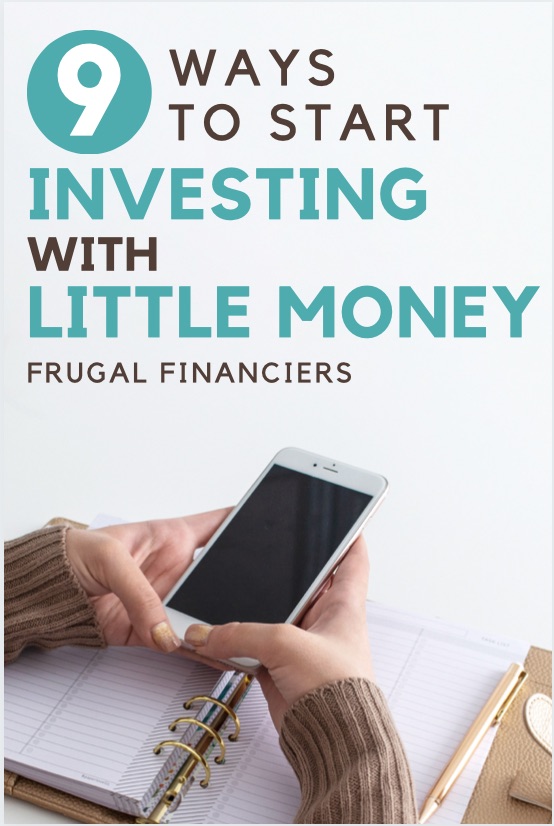
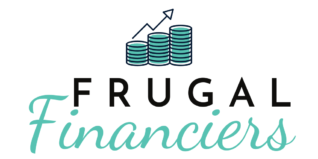
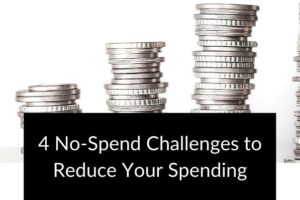
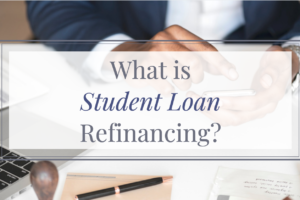
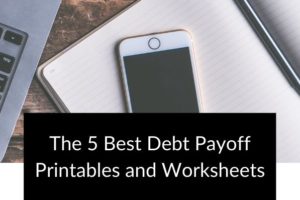
Leave a Reply
Your email is safe with us.
You must be logged in to post a comment.